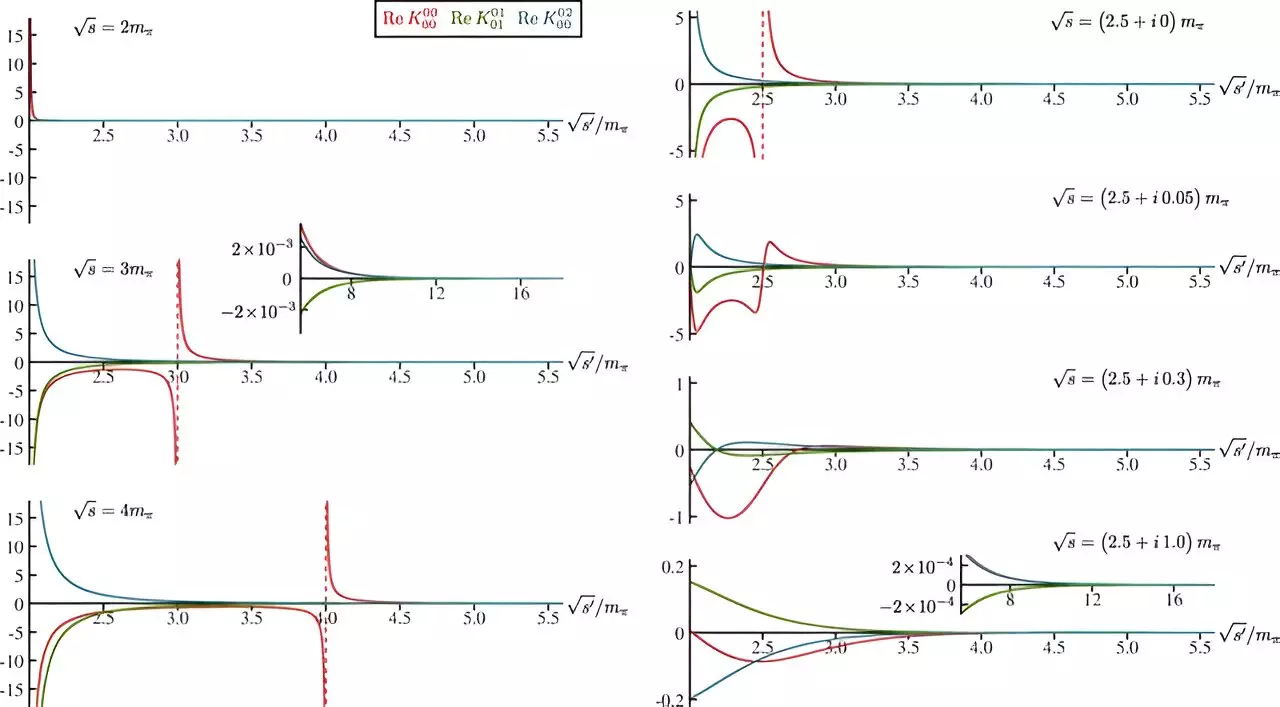The realm of nuclear physics is replete with intricate forces and particles that work harmoniously to form the very fabric of our universe. Central to these interactions is the strong force, a fundamental force that binds quarks together within protons and neutrons. Among the many intriguing particles studied in this field, the sigma meson stands out not only for its elusive nature but also for the potential insights it promises into the strong interaction. Research from the U.S. Department of Energy’s Thomas Jefferson National Accelerator Facility reveals that while our understanding of the sigma meson has been limited, recent advances may illuminate this enigmatic entity.
The sigma meson is a short-lived particle that comes into existence during collisions of pions, another family of quark-based particles. These interactions, governed by the strong force, allow quarks to change their configurations dynamically, leading to the creation of the sigma meson. However, its fleeting existence—lasting only a minuscule fraction of a second—poses significant challenges for experimental physicists striving to study its properties thoroughly.
The Challenge of Studying the Sigma Meson
One might wonder: why focus on a particle that is so ephemeral? As researchers Jozef Dudek, Arkaitz Rodas Bilbao, and Robert Edwards underscore, gaining clarity on the sigma meson is essential for comprehending the intricate pathways of the strong force and its role in the stability of matter. With a mass roughly half that of a proton, the sigma meson occupies a unique position within the spectrum of unstable particles engaged in strong-force interactions.
The crux of the challenge lies in the sigma meson’s instability. Traditional experimental techniques often fall short in capturing the properties of such transitory particles. Dudek describes the sigma meson as “a long-standing weird guy,” indicating that its peculiarities have made it elusive to study using conventional methods. The necessity to probe deeper into its properties has spurred innovative approaches that harness the computational power of supercomputers, leading to fundamentally new methods for virtual experimentation.
Harnessing Supercomputing Power for Breakthroughs
The trio of researchers has embarked on a path of computational exploration, employing supercomputers to simulate pion-pion interactions that yield valuable information about the sigma meson. This method is rooted in quantum chromodynamics (QCD), the theoretical framework that elucidates the strong force’s behavior. Unfortunately, QCD can be analytically intractable, necessitating the use of advanced computational resources to approximate its complexities.
By leveraging supercomputing power, the researchers are able to undertake vast arrays of calculations that would otherwise require lifetimes to complete on traditional computing systems. “If I want to be alive when the project finishes, it’s better to use a supercomputer,” Rodas Bilbao quips, adding a touch of humor to the otherwise serious nature of their work. This sentiment illustrates the pressing need for cutting-edge technology in modern scientific research.
The Innovations of the ExoHad Collaboration
The sigma meson research is part of a broader collaboration known as ExoHad, which specifically targets exotic particles and their characteristics. The combination of the researchers’ diverse skill sets, including expertise in QCD calculations and the development of algorithms for efficient computation, highlights the power of collaborative science. As Dudek aptly observes, “It’s this idea that you combine skill sets and work together to solve problems that neither one could solve on their own.” The synergy within this collaboration exemplifies how collective intellect can tackle some of the most challenging questions in physics.
The researchers have pioneered a method that incorporates mathematical constraints known as “dispersion relations” within their computational models. This has allowed for more accurate approximations of sigma meson properties, offering new pathways for further exploration of its structure. Additionally, investigations into related particles such as the kappa meson point toward expanding the horizons of nuclear physics research, suggesting a rich tapestry of phenomena still waiting to be uncovered.
A Future Bright with Potential
The quest to understand the sigma meson is just the initial step toward unraveling the mysteries of the strong interaction. The limitations noted in the calculations—where the quarks possess greater mass than their real counterparts—are hurdles that will need addressing in future studies. As the researchers aspire to refine their models, they envision a time when the intricate details of particles like the sigma, kappa, and others can be studied without the constraints of current computational limits.
As our tools and methodologies evolve, the field of nuclear physics stands on the cusp of potentially transformative discoveries. Understanding phenomena at the subatomic level not only helps us grasp the structure of matter but also connects us with the very essence of our existence. With each advancement, scientists inch closer to deciphering the code of the universe, revealing the complex interplay of forces that shapes our reality. The insights drawn from the sigma meson study might very well provide the framework that guides us through the deeper layers of the cosmos, reminding us that in the heart of science lies an unwavering pursuit of knowledge and understanding.

